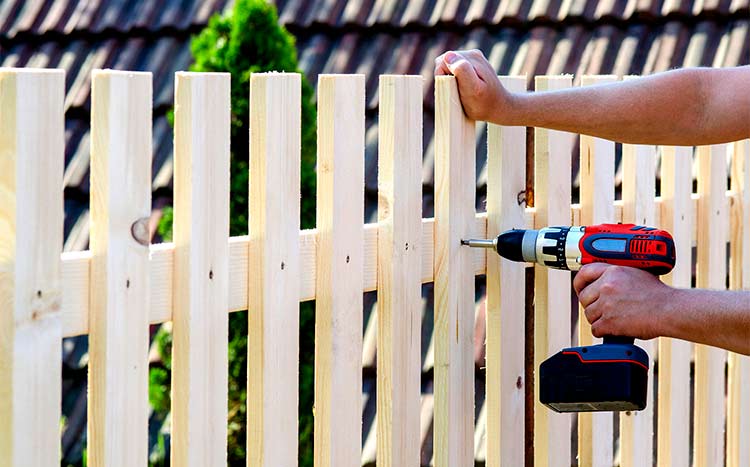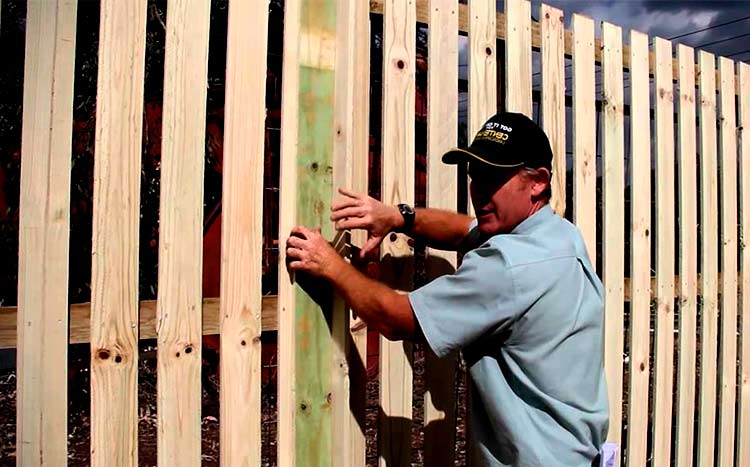In the United States, it’s very common for neighbors to experience disagreements over the ownership, upkeep, repair, and exact location of boundary fences, particularly among those who own animals or pets. Such disputes typically occur when trying to secure property boundaries while honoring the limits of adjacent land.
Virginia has property line fence laws contained in title 55.1 -properties and conveyances-under chapter 28 on trespasses and fences. In a nutshell, these statutes obligate adjoining landowners to build a boundary fence jointly sharing expenses and subsequent repair and maintenance costs unless one decides to leave their land open.

What we cover
ToggleDo I Need A Permit to Build A Fence in Virginia?
You may be required to apply for a building or zoning permit to erect a fence depending on where your land is located in Virginia. Building permits and fence building codes are under local county or municipal bodies. Section § 55.1-2814 of
Virginia fence laws give boards of supervisors or governing bodies of lower governance units the power to create local fence ordinances.
Some of the counties and municipalities within Virginia where you need some sort of permit or approval to build a fence include:
Richmond County, VA-Permit required for any construction projects or changes on residential and commercial developments across Richmond County.
Loudon County- Permits are required for residential decks that may also double up as privacy fences in some cases.
Accomack County- Permits required for building, altering, or demolishing structures.
Norfolk City- A zoning certificate is needed to build a fence in Norfolk except for interior lots.
Virginia Beach- A fence permit is required in Virginia Beach for fences within thirty feet and parallel to a public right of way. Homeowners or licensed contractors can obtain the fence permit.
Roanoke- residential building and zoning permits or zoning permits are required for fences that are more than six feet tall in Roanoke.
Some counties and cities within the state do not require landowners to obtain fence permits but still have strict building and zoning guidelines that must be adhered to when designing and erecting fences. Refer to local building ordinances before erecting a fence. Failure to obtain a fence where it is required may attract fines or, worse still, being forced to demolish the illegal fence at your cost.
Tip: Most counties or city building and zoning departments work closely with local building contractors. It will be easier and more convenient to let these contractors process the necessary permits or building permits on your behalf. If you need to locate a trusted fence contractor in your location, scroll to the top of the page and use our free tool by entering your zip code.
Can I Replace an Existing Fence Without A Permit?
It is not advisable to replace or alter an existing fence without obtaining a building or zoning permit where it is required. Keep in mind that permits are usually required to ensure compliance with local fence ordinances or regulations.
Replacing a fence may involve doing structural or aesthetic alterations which were not approved under the original permit. At the same time, fence regulations may have been revised and new restrictions or requirements introduced. Enquire from your local permits office whether you need a fresh permit or inspection before you commit to replacing your existing fence.
How Tall Can A Privacy Fence Be in Virginia?
There are varied fence height restrictions across the state of Virginia. These restrictions (contained in local county and municipal ordinances) are based on zoning districts, fence positioning in relation to a public right of way, and types of fences.
In general, you are not allowed to erect a fence that is taller than 6 feet, especially in urban residential districts. There are additional height limitations for fences on corner lots, front yard fences, and those facing a public right-of-way utility such as streets. For instance, front yard fences in Roanoke are restricted to 4 feet in height and 6 feet for side and rear yard fences.
Fence height restrictions are usually specified in local building codes or zoning guidelines. Most fence contractors have these ordinances and can design your fence to be compliant. At the same time, zoning inspectors may need to take a look at your designs or physical plans before they approve them.
Who Owns the Fence on Property Lines In VA?
Virginia’s fence laws recognize the landowner who builds a boundary fence as the owner. A landowner who erects a fence can demand half of the cost from other landowners who wish to use the fence or extend it to enclose their land.
However, the same law also recognizes joint ownership of property line fences. Landowners are obligated under these laws to jointly erect boundary fences unless one chooses to leave their land open and gives a ten-day notice to that effect. Both owners will be required to contribute towards repair and maintenance costs.
If there is no fence dividing adjoining lots, one of the owners can notify the other when they plan to erect a boundary fence and request them to contribute half of the construction costs. The other landowners will then have ten days to agree or decide otherwise and leave their land open.
How Do You Know Where the Property Boundary Is?
Look for physical permanent markers on the edge of your land to know where the property line is if was surveyed during subdivision. You can also check the drawings or maps on your deed for guidance on the size of your land and boundary location. Lastly, you can survey your lot to measure and determine boundary locations using existing data and onsite measurements.
Can My Neighbor Build A Fence On The Property Line?
Yes, landowners sharing a property line are allowed under Virginia fence law to erect fences even without input from adjoining landowners. However, the neighbor must give you written notice of their intentions. You must then reply with written notice in 10 days failure to which you will be compelled to pay half of the construction costs.

Can I Put Up A Fence on My Side of The Property Line?
You also have the right under the same Virginia fence laws to erect a dividing fence on your side of the property line. You can opt to only build your half and request your neighbor to build their half of the fence or build the entire fence and seek reimbursement later. You can also erect a fence on your land away from the boundary line.
What Is A Spite Fence?
A spite fence- as the naming suggests- is a fence built to annoy or inconvenience a neighbor in some way. Spite fences could be tall, solid, or positioned in a way to block passage, light, or a view. While Virginia’s fence laws do not expressly mention spite fences, such fences could be deemed illegal based on other laws at county and municipal levels.
Virginia Boundary Fence Laws at A Glance
| Statues | Boundary Fence Rules | Spite Fence Rules |
|---|---|---|
| Boundary fences: 55.1-2821, 55.1-2822., and 55.1-2823 Spite fences: Local Virginia fence ordinances | Adjoining landowners are obligated to build and maintain (at the joint and equal expense) a division fence between their lands unless one landowner decides to let their land lie open or the property owners agree otherwise between themselves. If an existing border fence falls out of repair, either landowner can give notice to the other of the intent to repair the fence, and request one-half reimbursement. | Virginia has no specific laws prohibiting “spite fence” built merely to annoy a neighbor. Landowners should review local zoning and building ordinances and obtain the appropriate permit before erecting any sort of fence. |
FAQ's
Who Owns the Fence Between Neighbors?
The landowner who erects a fence is recognized as the sole owner until such a time that the adjoining landowner requests to use it or extend it and reimburses them half of its expenses. Boundary fences built jointly are also jointly owned between neighbors.
What If A New Fence Is Blocking My View?
A fence that blocks your view can be inspected by local fence inspectors in Virginia to determine if it is legal and serves its intended purpose according to local ordinances. Tall solid fences are mostly illegal across the state.
Can I Paint My Side of The Fence?
Only paint your side of the fence if it is a jointly owned boundary fence. You should notify the other landowners of your intentions before proceeding to paint.
Can I Build A Fence Next to My Neighbor’s Fence?
Yes, you can opt to build your fence a few inches away from the property line. However, it is recommended under Virginia fence laws to agree and build a single boundary fence with your neighbor.
Is Virginia A Fence in Or Fence Out State?
Owing to its agricultural roots, Virginia is considered a fence-out state. This means landowners are expected to erect fences around their property in order to keep wandering animals out.













